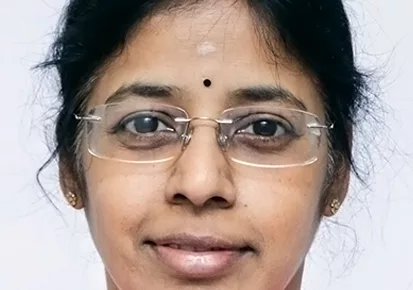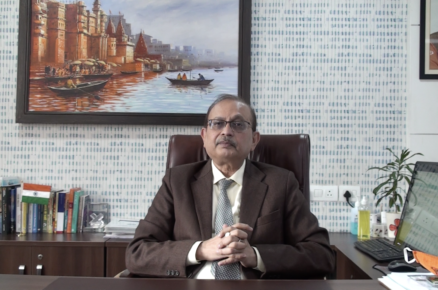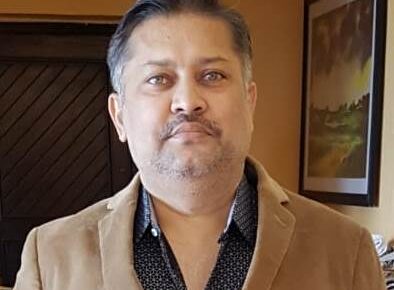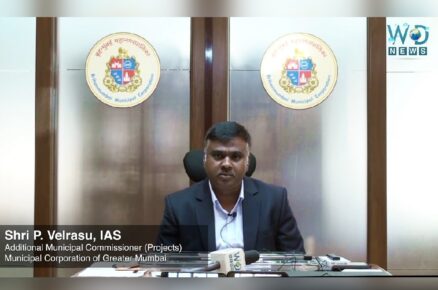Mr. Anil Deshpande
Senior General Manager,
Project Sales – Factory Automation & Industrial Division
MITSUBISHI ELECTRIC INDIA PVT. LTD.
There is an urgent need to conserve water and deploying leading-edge technology is the best way forward. The digitalisation of the water industry, which essentially involves technology, will ensure quality and efficiency by reducing water losses, leakages, sorting out operational issues, recycling, smart metering with their connectivity to centralised monitoring systems for demand management and commercial applications.
Water Digest (WD): How far has India reached in Water Digitalisation?
Anil Deshpande (AD): Although planet Earth has 70% of its surface covered with water, it is possibly the scarcest natural resource and considering that the per capita availability of water in India has dropped to 1/3rd over the last 60-70 years, we are not far away from a water crisis. Water scarcity issues can be attributed to factors such as depletion of water bodies and sources, contamination of aquifers, as well as distribution systems. Further, climate changes, environmental degradation and rapid urbanisation and industrialisation etc. have added to the rising crisis. Hence, a large section of the Indian population still does not have access to clean drinking water and the majority of the population has inadequate water availability. Moreover, it is extremely difficult for farmers, who depend largely on groundwater for irrigation and farming purposes. On top of all of these, increased water demand for industrial requirements continues to strain the available resources.
Taking note of this grievous situation, over the past 15-20 years conscious efforts have been made by central as well state governments by way of implementing the National Water Policy, which aims to conserve water resources and increase the availability. Many experts are working on formulating strategies reflecting ground realities to make sure their progressive policy implementation. These include water source sustainability, interlinking of rivers, formation of a National Water Grid and greywater reuse. Many state governments have also taken up Mission Water Programs and are heavily investing in implementing these policies to meet clean drinking water needs and farming requirements. For example, the “Namami Gange” project is being run under the aegis of the Central Government and involves state government plans.
Considering our present water infrastructure consisting of water sources, transportation, storage, distribution and supply to the last user, digitalisation of the water industry is a complex matter. We are possibly at a very primitive stage of such digitalisation and a lot needs to be done for water source management, building reservoirs, installing state-of-the-art instrumentation for accurate sensing of parameters, robust piping to eliminate leakages, local level reservoirs, smart metering systems to determine usage/demand and billing.
To build a robust water management system, there is a need for high-end automation for large data management, preventive maintenance and lastly, high scale IT Infrastructure for communication, centralised data monitoring systems. This will be based on high-speed Internet /IoT systems.
WD: The digitalisation of water is fast evolving into an indispensable resource. What will be its major impact on the water utilities in India?
AD: Water being the most valuable resource on Earth, there is a need to constantly deal with quality and efficient measures of management. The digitalisation of the water industry, which essentially involves technology, will ensure quality and efficiency by reducing water losses, leakages, sorting out operational issues, recycling, smart metering with their connectivity to centralised monitoring systems for demand management and commercial applications. Many local governments/municipal corporations have taken up such programmes to make sure 24/7 water availability to reduce water wastage as well as offering consumers real-time data on water usage for billing and payments.
Digitalisation which essentially deals with water management has a greater role in water conservation. This could potentially save huge amounts of water, which otherwise would be wasted. Also, there is a need to recycle the wastewater, which can help us in tasks other than drinking such as sanitisation, gardening, fire safety needs, industrial requirements, etc.
WD: What are the main barriers to adopting digital technology in the water and wastewater sector? How can we overcome them to accelerate full digital integration?
AD: Although a lot of work has been done on formulating and strategizing the NWP over the last two decades, its implementation on the ground remains a challenge. Many such programmes are still formulated as per existing administrative structures and miss out on the core considerations to resource and needs. Another major reason for this gap is that water is a state subject and considering our demography, it becomes even more challenging. Each state has its priorities even when it comes to water management. We have huge floods in some parts of the country while other parts are drought-prone. Population diversities, un-equal urbanisation, varied farming needs to be combined with treasury compulsions also makes it a difficult choice for certain states to implement national policies.
To ensure desired results in water management, end-to-end digitalisation is a must to deal with resources, storage and distribution. Hence, digitalisation should be dealt with at the national level to form national water grids, allocate water to states as per their needs and create uniform water fee payment metrics across all users.
WD: What do you think will be the big digital water trends in the next decade?
AD: While preparing a strategy for digitalisation, important consideration must be given to data collection, using it for decision making and finally monitoring the desired results. This will need intelligent and smart field instruments, various sensors, water meters. This whole implementation will need a smart automation platform to collate the data and utilise it for quality and efficient water management. This will also need detailed engineering to ensure successful operation of the Plants (WTP, STPs, ETPs), preventive maintenance, need-based course corrections and adapting newer technologies to meet the emerging challenges.
As they say, improvement is a continuous process and hence a lot of study and analysis must also be conducted in-house by comparing different improvement models for process optimisation using data for simulations and so on. Asset management is another important aspect of digitalisation in the water industry to make sure plants and processes run without or at least downtime by adapting real-time monitoring of various assets.
WD: How important is it for any country to have a digital water sector to accelerate development? Can you give examples of countries where it has been successful?
AD: Water requirements are going to be ever-increasing. Fortunately, present-day technology provides us possibilities for smart management through the connectivity of smart sensors, pumps, valves, meters, piping systems, etc. on IoT platforms. Digital platform also allows all these smart assets to communicate, exchange data in real-time, to ensure diagnosis and corrections. This would remove any kinds of abnormalities in the entire process flow.
Digitalisation will also help to integrate various government programmes of water management at the national and state level.
Many countries across the Globe have taken such initiatives and have been successful in implementing smart water management Programmes by adopting new technologies, e.g., Israel, which was one of the worst water-stressed countries, have adopted digitalisation. The results are so encouraging that today Israel is not only self-sufficient on its water requirements but is also selling water to a few neighbours. Australia is another example of successful deployment of digital technology in water management and there are many such stories. Countries facing huge water scarcity may implement such digitalisation programmes and technology to make the best possible use of available water in the most efficient manner.
WD: Any message for the readers of Water Digest?
AD: “Water” is synonymous with “Life”.We cannot imagine our lives without water. Incidentally, it is also the scarcest utility on planet Earth. India too has its own set of challenges considering our population, agriculture needs, urbanisation, and industrialisation. This could worsen due to climate changes. Hence there is an urgent need to conserve water, avoid depletion, contamination, and wastage.
While policymaking and implementation is a government prerogative, we on our part must make efforts to save every possible drop of water and this will be the best possible gift to our future generations.















